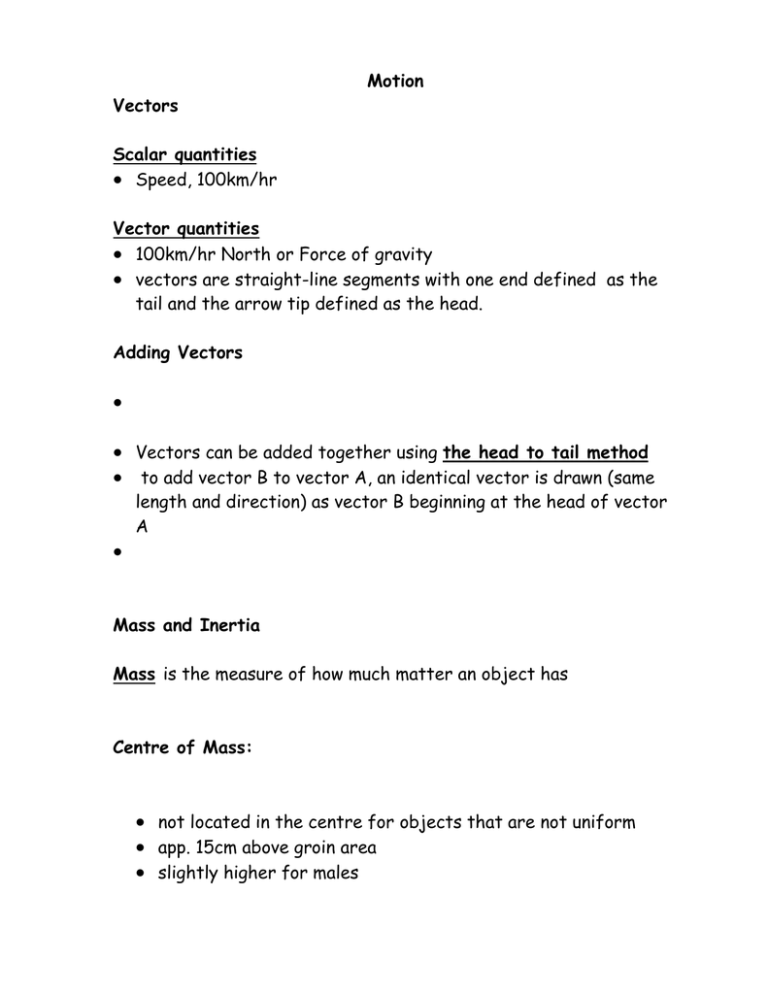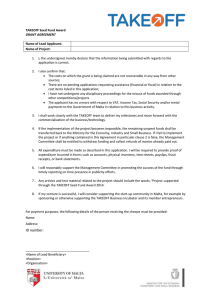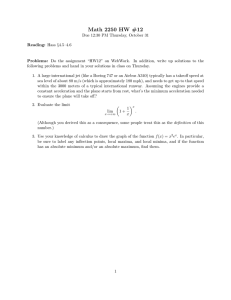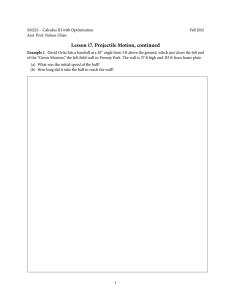advertisement

Motion Vectors Scalar quantities Speed, 100km/hr Vector quantities 100km/hr North or Force of gravity vectors are straight-line segments with one end defined as the tail and the arrow tip defined as the head. Adding Vectors Vectors can be added together using the head to tail method to add vector B to vector A, an identical vector is drawn (same length and direction) as vector B beginning at the head of vector A Mass and Inertia Mass is the measure of how much matter an object has Centre of Mass: not located in the centre for objects that are not uniform app. 15cm above groin area slightly higher for males Weight vs. Mass Mass measured in kilograms (kg) Weight measured in Newtons (N) (9.8 m/s2) Inertia is the reluctance of an object to change its state of motion from rest to moving, to moving faster, or to slowing down back to rest Rotating objects have a reluctance to change their angular motion Moment of inertia is a function of the mass of a rotating object and how its mass is distributed about its axis of rotation The more massive an object, the greater its moment of inertia Ex: The greater the distance of a rotating object from the centre of rotation, the greater its moment of inertia Ex: Newton’s First Law of Motion An object will not change its state of motion (it will continue to be at rest or moving with constant velocity), unless acted upon by a net , external force For example: Newton’s Second Law of Motion For linear movements, the acceleration (a) a body experiences is proportional to the force (F) causing it, and takes place in the same direction as the force For angular movements, the angular acceleration of a body is proportional to the moment of force causing it, and takes place in the same direction as the moment of force The greater the force applied to a soccer ball that has the same mass, the greater the ball’s acceleration As the soccer ball’s mass increases, it experiences less acceleration from a kick of the same force As the mass of the soccer ball is increased, greater force must be generated if the ball is to have the same acceleration Impulse, Impact and Momentum Momentum Impulse Impact Momentum is created by an impulse and is lost through impact Impulse and impact are both associated with bodies that are changing their state of motion by experiencing large accelerations over relative short time periods Collision or impact skills can sometimes manipulate the time of contact and reduce the magnitude of the external force To increase impulse, a sprinter must increase the net external force per step Gymnasts flex upon landing to allow greater time for external forces of the floor to impact their bodies, thus decreasing force Newton’s Third Law of Motion Every action has an equal and opposite reaction The two acting forces are equal in magnitude, but opposite in direction Example: Projectile Motion The C of M of a projectile will follow a parabolic path The parabolic path followed is determined only as a function of the projectile’s takeoff velocity Maximum Height and Range Max. vertical distance (height) Max. horizontal distance (range) Taking off and Landing at Different Heights If the human body is the projectile, a higher centre of mass can be achieved by elongating the body at takeoff and by raising as many body parts as possible The range a projectile will travel increases if the takeoff height is greater than the landing height, and decrease if the takeoff height is less than the landing height Examples: Air Resistance: force acting upon an object will change the motion and path of object Optimizing Range Increasing the takeoff height compared to the landing height lowers the optimum takeoff angle of 45 degrees. Skills which take advantage of air resistance in increasing range also have a lower optimum takeoff angle In most instances, increasing the magnitude of the takeoff velocity gains the greatest increase in horizontal distance






